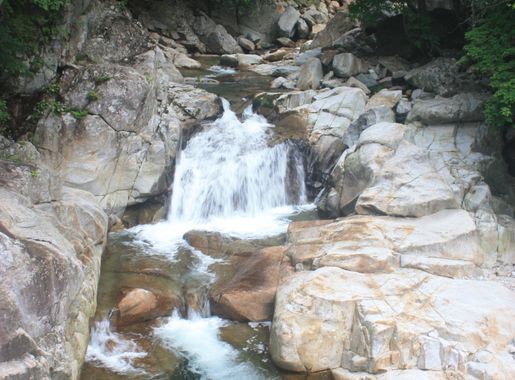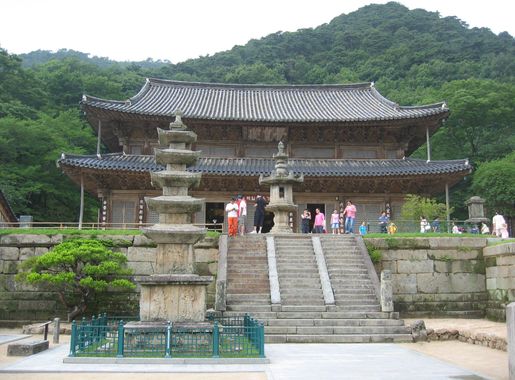
The Majestic Wilderness of Jirisan National Park
Experience the timeless beauty and rich cultural heritage of Jirisan National Park, South Korea's oldest and largest national park.
Jirisan National Park is South Korea's largest and oldest national park, offering a captivating escape into nature. Nestled within the Sobaek Mountain Range, the park spans three provinces and encompasses a diverse array of landscapes, from dense forests to serene valleys. The park is home to the towering Cheonwangbong Peak, the second-highest in South Korea, which beckons adventurous hikers with breathtaking views. In addition to its natural beauty, Jirisan is steeped in cultural and historical significance. The park houses several ancient temples, including the famous Hwaeomsa Temple, which dates back to the 6th century. These temples provide a tranquil atmosphere for reflection and offer a glimpse into Korea's spiritual heritage. Throughout the park, visitors can find numerous trails that vary in difficulty, making it accessible for both casual walkers and seasoned trekkers. Wildlife enthusiasts will be thrilled by the park's biodiversity. Jirisan is a sanctuary for many rare species, including the endangered Korean goral and Asiatic black bear. Seasonal changes bring their own charm, with spring blossoms, lush summer foliage, vibrant autumn leaves, and snow-covered winter landscapes, ensuring that every visit offers something unique. Whether you are seeking adventure, tranquility, or a deep connection with nature, Jirisan National Park promises an unforgettable experience.
Local tips in Jirisan National Park
- Visit in different seasons to experience the park's changing beauty.
- Bring proper hiking gear, as some trails can be challenging.
- Start your hike early to avoid crowds and enjoy a peaceful journey.
- Check weather conditions before your trip, as they can change rapidly.
- Don't miss Hwaeomsa Temple for a dose of culture and history.
The Majestic Wilderness of Jirisan National Park
Jirisan National Park is South Korea's largest and oldest national park, offering a captivating escape into nature. Nestled within the Sobaek Mountain Range, the park spans three provinces and encompasses a diverse array of landscapes, from dense forests to serene valleys. The park is home to the towering Cheonwangbong Peak, the second-highest in South Korea, which beckons adventurous hikers with breathtaking views. In addition to its natural beauty, Jirisan is steeped in cultural and historical significance. The park houses several ancient temples, including the famous Hwaeomsa Temple, which dates back to the 6th century. These temples provide a tranquil atmosphere for reflection and offer a glimpse into Korea's spiritual heritage. Throughout the park, visitors can find numerous trails that vary in difficulty, making it accessible for both casual walkers and seasoned trekkers. Wildlife enthusiasts will be thrilled by the park's biodiversity. Jirisan is a sanctuary for many rare species, including the endangered Korean goral and Asiatic black bear. Seasonal changes bring their own charm, with spring blossoms, lush summer foliage, vibrant autumn leaves, and snow-covered winter landscapes, ensuring that every visit offers something unique. Whether you are seeking adventure, tranquility, or a deep connection with nature, Jirisan National Park promises an unforgettable experience.
When is the best time to go to Jirisan National Park?
Iconic landmarks you can’t miss
Naejangsan National Park
Discover the breathtaking beauty of Naejangsan National Park in Jeollabuk-do, where nature, culture, and adventure await.
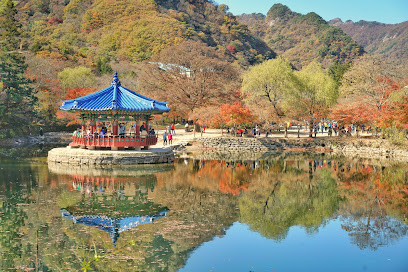
Songnisan National Park Beopjusa District
Explore the breathtaking landscapes and spiritual serenity of Songnisan National Park Beopjusa District in Chungcheongbuk-do, South Korea.
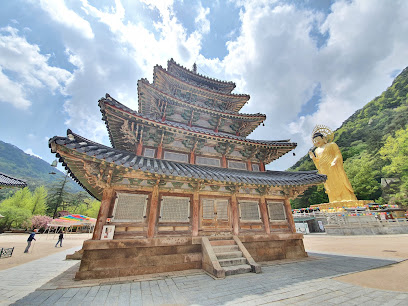
Jirisan Cheonwangbong Peak
Explore the breathtaking heights of Jirisan Cheonwangbong Peak, South Korea's highest point, offering stunning landscapes and rich biodiversity.
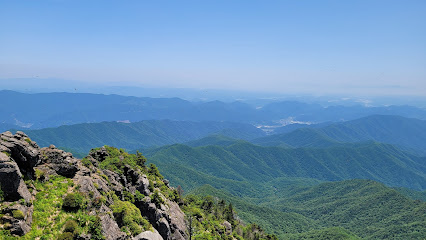
Songnisan National Park
Explore the breathtaking landscapes and rich cultural heritage of Songnisan National Park in Chungcheongbuk-do, South Korea.
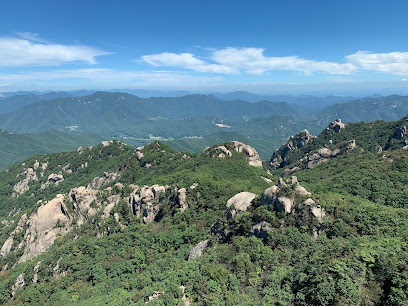
Gayasan National Park
Explore Gayasan National Park: A breathtaking blend of natural beauty, diverse wildlife, and rich cultural heritage in South Korea.

Chiaksan National Park
Explore the natural beauty and tranquility of Chiaksan National Park in Gangwon-do, a perfect retreat for outdoor enthusiasts and nature lovers.
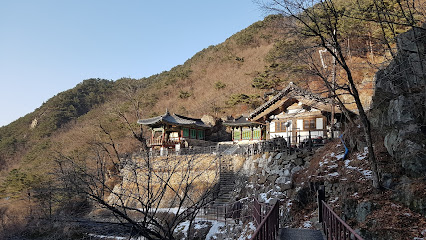
Juwangsan National Park
Explore the breathtaking landscapes and rich biodiversity of Juwangsan National Park, a must-visit destination for nature lovers in South Korea.
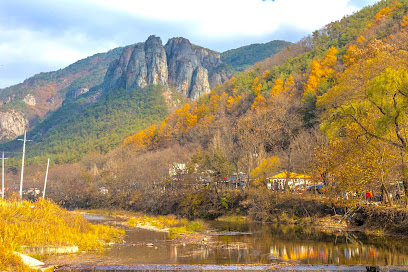
지리산국립공원 노고단 지구
Discover the breathtaking landscapes and rich cultural heritage of Jirisan National Park, a must-visit destination for nature lovers and adventurers in South Korea.
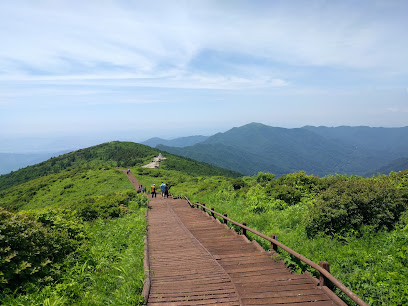
Gyeryongsan National Park
Explore the breathtaking landscapes and rich biodiversity of Gyeryongsan National Park, a must-visit destination for nature lovers in South Korea.
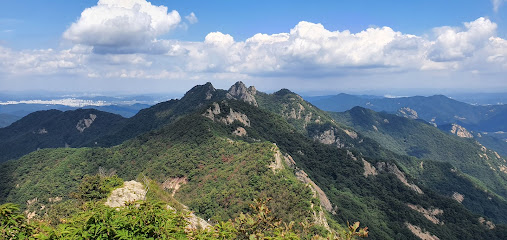
Deogyusan National Park
Explore the enchanting landscapes of Deogyusan National Park, a natural gem in South Korea, perfect for hiking, wildlife watching, and seasonal beauty.

Hallyeohaesang National Park
Discover the stunning coastal beauty and rich biodiversity of Hallyeohaesang National Park in South Korea, a perfect escape for nature lovers and adventurers.
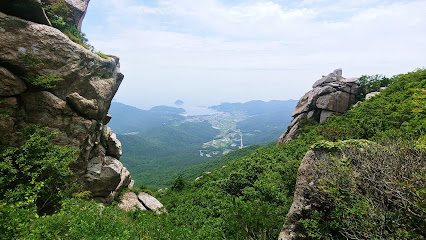
Unmissable attractions to see
Jinjuseong Fortress
Explore the historic Jinjuseong Fortress in Jinju-si, a captivating landmark offering stunning views and rich cultural experiences in South Korea.
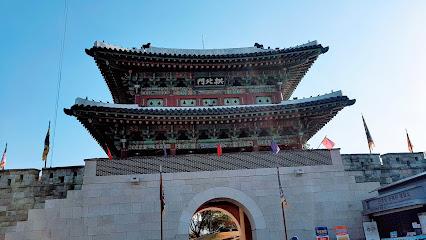
Ssanggyesa Temple
Explore the serene beauty and rich culture of Ssanggyesa Temple, a hidden gem in the heart of Hadong-gun, Gyeongsangnam-do.
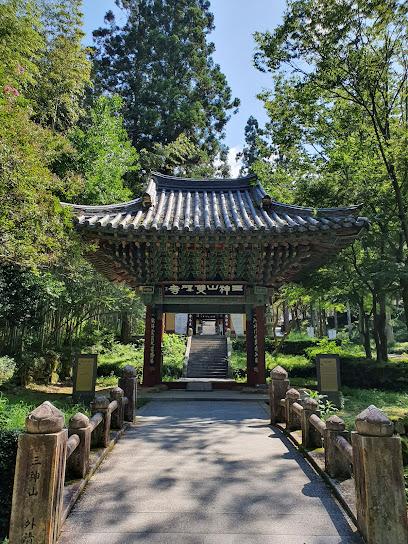
Seongsamjae Service Area
Discover the scenic beauty and essential comforts at Seongsamjae Service Area in Jeollanam-do, a perfect stop for nature lovers and weary travelers.
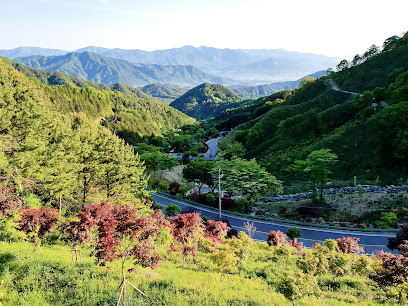
Cheoneunsa
Discover the tranquil beauty of Cheoneunsa, a serene Buddhist temple nestled in Jeollanam-do's picturesque landscapes.
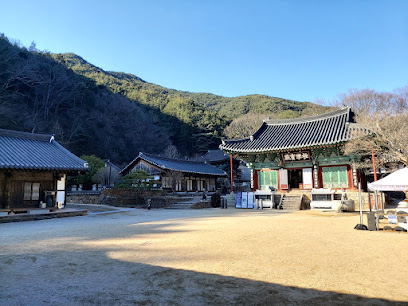
Jinju National Museum
Explore Korea's rich history at Jinju National Museum, where artifacts and exhibitions bring the past to life in a captivating setting.

지리산국립공원 뱀사골탐방안내소
Explore the stunning landscapes and rich biodiversity of Jirisan National Park at the Visitor Center, your gateway to adventure and discovery.
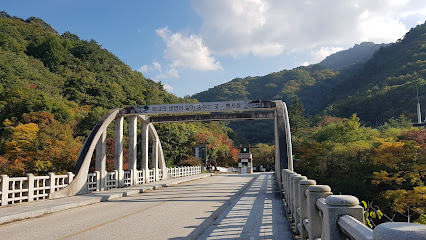
Baemsagol Valley
Explore the breathtaking Baemsagol Valley, a natural paradise in Jeollabuk-do, South Korea, rich in culture, adventure, and stunning landscapes.
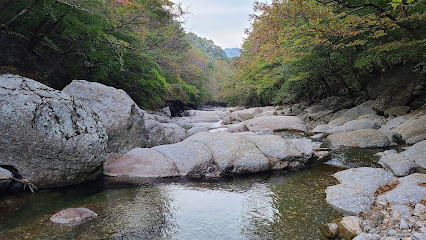
지리산 칠불사
Explore the serene beauty of Jirisan Cheongbulsan, a stunning Buddhist temple nestled in the breathtaking landscapes of Hadong-gun, Gyeongsangnam-do.
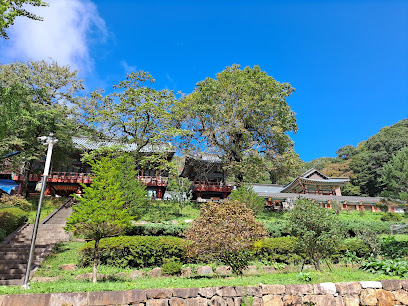
연기암
Discover tranquility at Yeongiam Temple, a serene Buddhist sanctuary nestled in the lush landscapes of Jeollanam-do, South Korea.
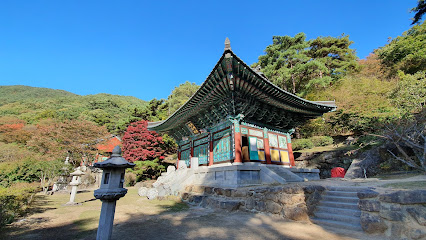
화엄사 대웅전
Explore Hwaeomsa Temple in Gurye-gun, a serene Buddhist temple surrounded by nature, offering cultural richness and spiritual tranquility.
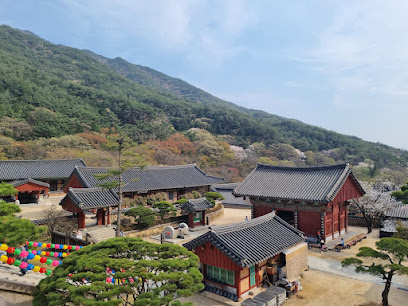
달궁계곡
Experience the tranquility and natural beauty of Deokdong-ri, a hidden gem in Jeollabuk-do, South Korea, perfect for nature lovers and culture enthusiasts.
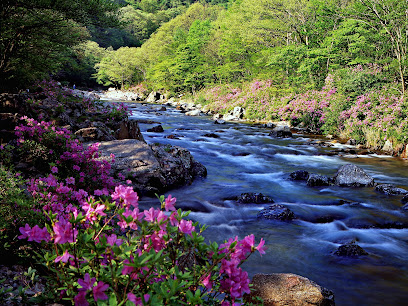
지리산 연곡사
Experience the serene beauty and spiritual heritage of Jirisan Yeongoksa Temple in Jeollanam-do, a must-visit Buddhist temple for all travelers.
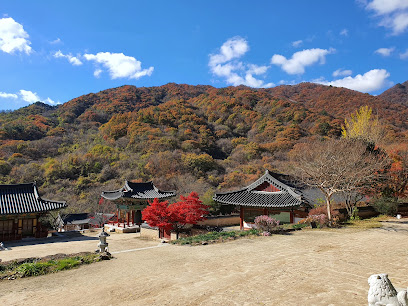
지리산허브밸리
Explore the aromatic allure of Jirisan Herb Valley, where nature meets education in a serene theme park setting in Jeollabuk-do.
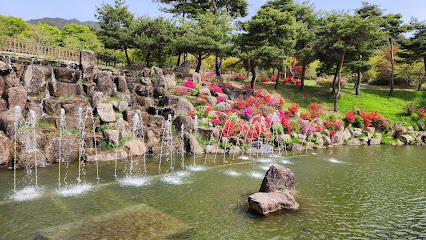
지리산 천년송
Experience the breathtaking landscapes and rich biodiversity of Jirisan National Park, a natural preserve in South Korea that promises adventure and tranquility.
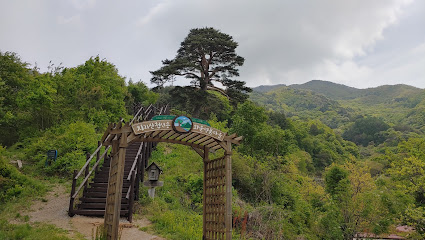
십리벚꽃길
Experience the breathtaking beauty of the Cherry Blossom Path in Hadong-gun, where nature's artistry unfolds every spring, inviting relaxation and exploration.
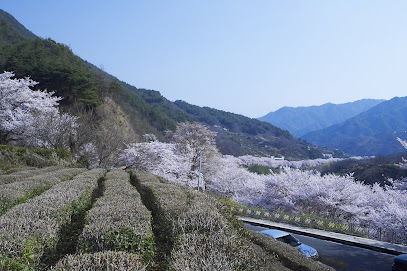
Markets, malls and hidden boutiques
Jirisan National Park
Discover the serene beauty and rich biodiversity of Jirisan National Park, a must-visit destination for nature lovers and adventurers.
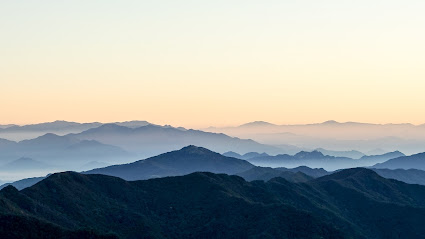
Cheng han
Discover Cheng Han Mall in Muju, a vibrant shopping haven blending local charm with international brands, perfect for a memorable retail adventure.

Tori
Discover Tori in Muju: where local craftsmanship meets contemporary shopping in a unique cultural experience.

N.cat
Explore N.cat in Muju for an unforgettable shopping experience filled with unique local products and delightful cuisine.

Colombia
Explore the vibrant world of batik clothing in Colombia, where tradition meets artistry in every stitch.

Kim lana
Explore the charm of Kim Lana in Muju-gun, where local craftsmanship meets authentic Korean culture, perfect for unique souvenirs and experiences.

Dream
Explore Dream Mall in Muju for a diverse shopping experience, delightful dining, and engaging entertainment in a modern setting.

ski shop
Discover the best ski shop in Muju, offering top-notch gear and expert advice for an unforgettable winter adventure in South Korea's stunning mountains.

Chuu
Discover the latest in Korean fashion at Chuu, a must-visit clothing store in the scenic Muju region, perfect for trendy apparel and unique accessories.

Gid
Explore Gid in Muju, a vibrant shopping mall blending local culture with global brands, dining, and entertainment experiences for every traveler.

Jasmeetsingh
Explore Jasmeetsingh in Muju for unique local products and an authentic shopping experience that reflects Korean culture.

Vtvysft
Explore Vtvysft in Muju: A lively shopping mall with diverse shops, dining, and entertainment perfect for tourists and locals alike.

Negocio De Juguetes
Explore a magical world of toys at Negocio De Juguetes in Muju, where every corner holds a new adventure for kids and collectors alike.

Miniso
Shop trendy and affordable goods at Miniso in Muju, a vibrant store offering a wide selection of lifestyle products for every traveler.

Show
Discover Muju: A Shopping Paradise in Muju-gun, where modern retail meets traditional Korean culture for an unforgettable experience.

Essential bars & hidden hideouts
봉동상회
Experience the vibrant nightlife and local flavors at 봉동상회, a pub where tradition meets modernity in Gurye-gun, Jeollanam-do.
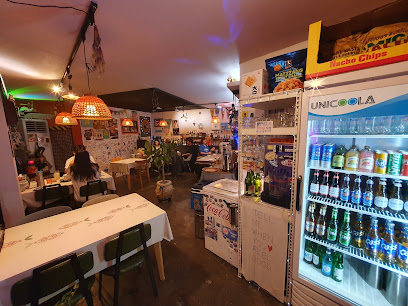
Fatxi maxamad
Discover the vibrant nightlife at Fatxi Maxamad in Muju-gun, where local culture and an inviting atmosphere await all visitors.

피아골 미선씨
Discover the authentic flavors of Korean cuisine at 피아골 미선씨, a culinary gem in the heart of Gurye-gun, Jeollanam-do.
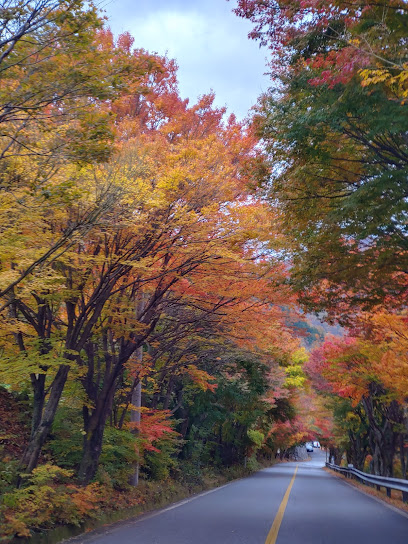
Montte
Discover Montte, the serene wine bar in Jeollanam-do, where local and international wines meet stunning views and a cozy atmosphere.

Pyongyan
Discover the lively atmosphere of Pyongyan in Muju, where local culture meets vibrant nightlife in a cozy bar setting.

رستوران
Discover the lively bar scene in Muju, offering a blend of local flavors and vibrant atmosphere perfect for tourists seeking authentic experiences.

Blink
Discover Blink, Muju's vibrant bar offering creative cocktails and a lively atmosphere, perfect for socializing and enjoying local flavors.

Aldino.xavier
Discover Aldino.xavier, a cozy bar in Muju that offers a unique drink experience amidst South Korea's stunning landscapes.
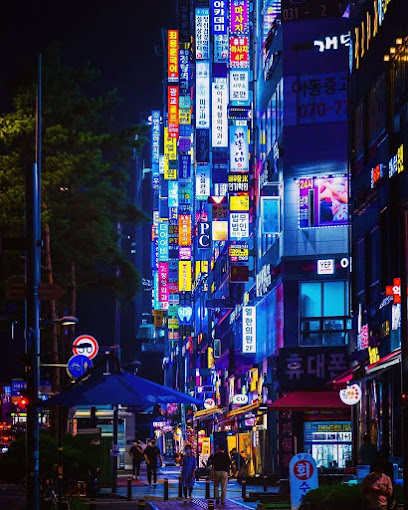
늘봄단란주점
Discover the lively atmosphere of 늘봄단란주점, a karaoke bar in Hadong-gun where fun and music blend perfectly for an unforgettable night out.

Ростовская улица
Discover the lively atmosphere of Ростовская улица in Muju-gun, where local culture meets vibrant nightlife in a charming bar setting.

anu
Experience the lively spirit of Muju-gun at Anu Bar, where friendly vibes and refreshing drinks await in Jeollabuk-do.

ぽっさんちっぽんじょむ
Discover the vibrant culinary scene at ぽっさんちっぽんじょむ, a charming stand bar in Muju-gun offering authentic Korean flavors.

레드BAR
Experience the cozy ambiance and local flavors at 레드BAR, a hidden gem in Jeollabuk-do perfect for unwinding after your adventures.

치킨공화국
Experience the lively atmosphere and unique flavors of 치킨공화국, a bar that brings friends together over delicious Korean chicken and drinks.

기분좋은날
Discover the essence of Korean drinking culture at 기분좋은날 in Jeollanam-do, a cozy soju pub perfect for relaxation and cultural immersion.

Local Phrases about Jirisan National Park
-
- Hello안녕하세요
[annyeonghaseyo] - Goodbye안녕히 가세요
[annyeonghi gaseyo] - Yes네
[ne] - No아니요
[aniyo] - Please/You're welcome부탁합니다/천만에요
[butakhamnida/cheonmaneyo] - Thank you감사합니다
[gamsahamnida] - Excuse me/Sorry죄송합니다
[joesonghamnida] - How are you?어떻게 지내세요?
[eotteoke jinaeseyo?] - Fine. And you?잘 지내고 있어요. 그리고 당신은요?
[jal jinaego isseoyo. geurigo dangsineunyo?] - Do you speak English?영어를 하십니까?
[yeongeoreul hasimnikka?] - I don't understand이해하지 못해요
[ihaehaji mothaeyo]
- Hello안녕하세요
-
- I'd like to see the menu, please메뉴를 보고 싶어요
[menyureul bogo sipeoyo] - I don't eat meat고기를 먹지 않아요
[gogireul meokji anayo] - Cheers!건배!
[geonbae!] - I would like to pay, please계산해 주세요
[gyesanhae juseyo]
- I'd like to see the menu, please메뉴를 보고 싶어요
-
- Help!도와주세요!
[dowajuseyo!] - Go away!가세요!
[gaseyo!] - Call the Police!경찰을 불러주세요!
[gyeongchareul bulleojuseyo!] - Call a doctor!의사를 불러주세요!
[uisareul bulleojuseyo!] - I'm lost길을 잃었어요
[gireul ilheosseoyo] - I'm ill아픈 것 같아요
[apeun geot gatayo]
- Help!도와주세요!
-
- I'd like to buy...사고 싶어요...
[sago sipeoyo...] - I'm just looking그냥 둘러보고 있어요
[geunyang dulleobogo isseoyo] - How much is it?얼마에요?
[eolmaeyo?] - That's too expensive너무 비쌉니다
[neomu bissamnida] - Can you lower the price?가격을 깎을 수 있나요?
[gageogeul kkageul su innayo?]
- I'd like to buy...사고 싶어요...
-
- What time is it?지금 몇 시에요?
[jigeum myeot sieyo?] - It's one o'clock한 시에요
[han sieyo] - Half past (10)열 시 반
[yeol si ban] - Morning아침
[achim] - Afternoon오후
[ohu] - Evening저녁
[jeonyeok] - Yesterday어제
[eoje] - Today오늘
[oneul] - Tomorrow내일
[naeil] - 1일
[il] - 2이
[i] - 3삼
[sam] - 4사
[sa] - 5오
[o] - 6육
[yuk] - 7칠
[chil] - 8팔
[pal] - 9구
[gu] - 10십
[sip]
- What time is it?지금 몇 시에요?
-
- Where's a/the...?...이 어디에 있어요?
[...i eodie isseoyo?] - What's the address?주소가 뭐에요?
[jusoga mwoeyo?] - Can you show me (on the map)?(지도로) 보여주세요
[(jidoro) boyeojuseyo] - When's the next (bus)?다음 버스는 언제 와요?
[daeum beoseuneun eonje wayo?] - A ticket (to ....)표 (....으로)
[pyo (euro)]
- Where's a/the...?...이 어디에 있어요?
History of Jirisan National Park
-
Jirisan National Park was officially established in 1967, making it South Korea's first national park. Spanning three provinces—South Jeolla, North Jeolla, and South Gyeongsang—the park covers an area of over 471 square kilometers. The establishment aimed to preserve its diverse ecosystems, rich biodiversity, and the cultural heritage embedded in the mountainous region.
-
Jirisan, translated as 'the mountain of the odd and wise people,' is steeped in legend and folklore. According to local mythology, Jirisan is considered one of the three 'holy mountains' of Korea, alongside Hallasan and Geumgangsan. It is believed that the spirits of wise hermits reside in its peaks, and various temples in the region are dedicated to these spiritual figures.
-
Jirisan is home to several ancient Buddhist temples that date back centuries. The most notable among them is Hwaeomsa Temple, founded in 544 AD during the Silla Dynasty. The temple complex is renowned for its architectural beauty and historical significance, including the Four Lion Three-story Stone Pagoda, which is a designated National Treasure.
-
During the Korean War (1950-1953), Jirisan served as a refuge for guerrilla fighters. The dense forests and rugged terrain provided a strategic advantage for small groups resisting the North Korean advance. Many historical accounts and local stories recount the bravery and struggles of those who took to the mountains during this tumultuous period.
-
Jirisan National Park is the site of various cultural festivals that celebrate traditional Korean culture and the natural beauty of the region. Events such as the Jirisan Mountain Festival and the Wildflower Festival draw visitors from all over the country and beyond, offering a glimpse into the local customs, traditional music, and culinary delights.
-
Jirisan's ecological importance cannot be overstated. The park is a biodiversity hotspot, home to over 1,000 species of plants, 30 species of mammals, and a variety of bird species. Efforts to conserve its rich flora and fauna have led to numerous research initiatives and conservation projects, making it a critical area for environmental studies.
Jirisan National Park Essentials
-
Jirisan National Park is located in the southern region of South Korea, spanning several provinces including Jeollanam-do, Jeollabuk-do, and Gyeongsangnam-do. The nearest major airport is Gimhae International Airport in Busan. From Busan, you can take a bus or train to the nearby cities of Gurye or Hadong, which serve as gateways to the park. Alternatively, you can take a bus from Seoul to Namwon, another entry point to the park. The journey from Seoul to Namwon typically takes around 3 hours by bus.
-
Once you are near Jirisan National Park, local buses and taxis are available to take you to the park's entrances. The park itself is best explored on foot, with numerous well-marked hiking trails. Renting a car is also an option if you prefer to have more flexibility in your travel schedule. Be sure to check the local bus schedules, as they can vary depending on the season.
-
The official currency of South Korea is the South Korean Won (KRW). Credit cards are widely accepted in cities and larger towns, but it is advisable to carry cash when visiting rural areas and the park itself. ATMs are available in nearby towns such as Gurye and Namwon, but it is wise to withdraw sufficient cash before heading into the park.
-
Jirisan National Park is generally safe for tourists. However, it is important to take standard precautions. Avoid hiking alone, especially at night, and always stay on marked trails. Keep an eye on your belongings in crowded areas. There are no specific high-crime areas targeting tourists within the park, but it is always best to stay vigilant and aware of your surroundings.
-
In case of emergency, dial 119 for immediate assistance. Emergency services including police and medical facilities are available in nearby towns such as Gurye and Namwon. It is recommended to have travel insurance that covers medical emergencies. For minor health issues, there are pharmacies in these towns where you can purchase over-the-counter medications.
-
Fashion: Do dress in layers and wear comfortable hiking shoes, as weather conditions can change rapidly in the mountains. Avoid wearing flashy or revealing clothing. Religion: Do respect local customs and traditions, especially when visiting temples within the park. Public Transport: Do be respectful and give up your seat to elderly passengers. Don't eat or drink on public transport. Greetings: Do greet people with a slight bow or a nod of the head. A simple 'Annyeonghaseyo' (hello) is appreciated. Eating & Drinking: Do try local delicacies and accept food offerings graciously. Don't refuse hospitality, as it is considered impolite.
-
To experience Jirisan National Park like a local, consider visiting during the spring or fall when the scenery is especially beautiful. Engage with locals in nearby towns; they are often friendly and willing to share stories about the park's history and culture. Don't miss trying local specialties such as 'Jirisan honey' and 'Gurye persimmons'. For a unique experience, stay in a traditional Korean guesthouse (hanok) in one of the nearby villages.
Trending Landmarks in Jirisan National Park
Nearby Cities to Jirisan National Park
-
Things To Do in Gwangju
-
Things To Do in Jeonju
-
Things To Do in Daegu
-
Things To Do in Daejeon
-
Things To Do in Mokpo
-
Things To Do in Busan
-
Things To Do in Ulsan
-
Things To Do in Gyeongju
-
Things To Do in Pohang
-
Things To Do in Andong
-
Things To Do in Jeju City
-
Things To Do in Suwon
-
Things To Do in Incheon
-
Things To Do in Seoul
-
Things To Do in Chuncheon


